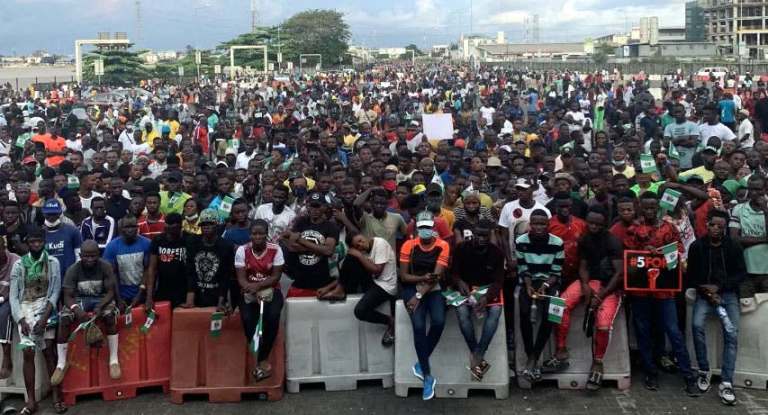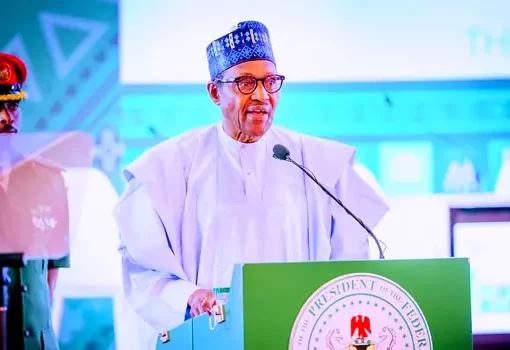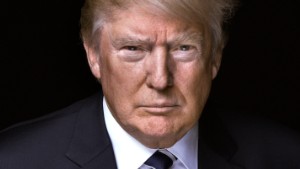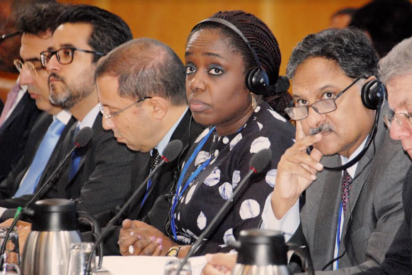The Lagos State Judicial Panel of Inquiry on the investigation of the Lekki Tollgate incident and cases of police abuses has disclosed how it arrived at the finding that a massacre occurred at Lekki tollgate on the night of October 20, last year.
In a response to the Lagos State government’s white paper, released on Thursday, the panel said it adopted the dictionary meaning of ‘massacre’, which means an act of killing a number of usually helpless or unresisting human beings under circumstances of atrocity or cruelty.’
In its report submitted on November 15, the panel said nine persons were killed at the Lekki tollgate, while several other protesters shot at, maimed, injured and assaulted.
The Lagos state government, in its white paper, however, countered the finding of the panel, saying there was no massacre at the Lekki tollgate.
Explanation
Explaining the basis for its finding, the panel said 13 petitions relating to deaths and injuries, including amputations and multiple fractures from the Lekki tollgate were received, heard and believed, upon full hearing.
The panel said it also reviewed documents obtained from the Lekki Concession Company (LCC) and testimonies of survivors before it to arrive at the finding.
According to one of the documents tendered by the company, “LCC strongly condemns the shooting of unarmed peaceful protesters at the Admiralty Circle Toll Plaza yesterday, 20th October, 2020”.
The panel said it found that the evidence corroborated the case of the #EndSARS protesters that the protest was peaceful, orderly and coordinated, that soldiers invaded the protests and shot at “unarmed, helpless, unresisting and peaceful protesters,” which the panel considered as cruel and atrocious.
“It was in the context of the nature of the peaceful protest and the atrocious and cruel actions of the soldiers which led to several deaths, that the Panel concluded on massacre,” the statement reads in part.
The panel added that since the Lagos state government identified with the cause of the #EndSARS protesters and decided to allow them congregate at two main points, at Government House, Alausa, Ikeja and Lekki tollgate, the invitation and deployment of the military was totally unwarranted.
“The Panel considered that firing live bullets at unarmed, peaceful and unresisting protesters which led to the death of some of them, was cruel and atrocious on the part of the military and the police. The White Paper ignored these explanations and findings by the Panel,” the panel said.
Cover-up
The judicial panel further said the state government, in its white paper, did not address its findings on the actions of certain agencies of government to cover up the massacre.
“The Panel accepted the report of its forensic expert, Sentinel, that LCC manipulated its cameras in order to withhold material evidence; That LASG did not secure the scene of the LTG Incident in order to facilitate proper investigation.
“The Panel accepted the report of its forensic expert, Sentinel, that LAWMA cleaned up the LTG after the protests, thus destroying potential and useful evidence.
“The Panel accepted the evidence of EndSARS protesters that police were trailing them in order to intimidate and scare them from open testimonies,” the statement contained.
The panel added that the Lagos State government “did not release funds to conduct DNA tests on the corpses as was done in the cases of Dana Air and Synagogue Church,” and that these vital findings were not addressed in its white paper.
Addressing the inconsistencies and contradictions pointed out by the government in its white paper, the panel said the government only misconceived the panel’s findings in relation to the Forensic Pathologist, John Obafunwa.
“The Panel did not state that Professor Obafunwa was the sole source of its conclusion on deaths at the LTG but rather adopted his testimony as ONE of the sources of confirmation of deaths.
“Professor Obafunwa’s testimony related to 99 bodies which were said to have been picked by Lagos State Environmental Health Management Unit (LASEHMU).
“Three of these 99 bodies were said to come from LTG, based upon the descriptions and markings on the bodies by LASEHMU. As Professor Obafunwa did not pick these bodies himself and he was not the author of their descriptions, he did not give evidence of the place of death but rather the cause of death,” the statement reads.
The panel further said the evidence of Serah Ibrahim, as a witness of shootings and deaths, was believed by the panel, alongside the evidence of other witnesses.
“She tendered videos and other documents in proof and she was not discredited under cross-examination.
“Olalekan Salami personally testified before the Panel of dead bodies packed in the vans of soldiers wherein he was also taken for dead in the same van and the Panel believed him.
“Dabira Ayuku personally testified about bodies packed in the vans of soldiers and the Panel believed her.
“Videos of evidence of deaths from families and relatives of deceased persons from the LTG were tendered before the Panel, which it held to be credible as they were not discredited under cross-examination,” the statement reads.
It added that there was no contrary evidence offered in rebuttal of the multiple evidence of deaths and injuries from the Lekki tollgate, which formed part of the findings of the panel.
The panel, however, expressed its gratitude to the government and people of Lagos for the opportunity given to serve and hopes that with these clarifications, the government will commence the process of genuine healing and reconciliation which it started through the payment of compensation to deserving victims through the Panel.
PREMIUM TIMES






